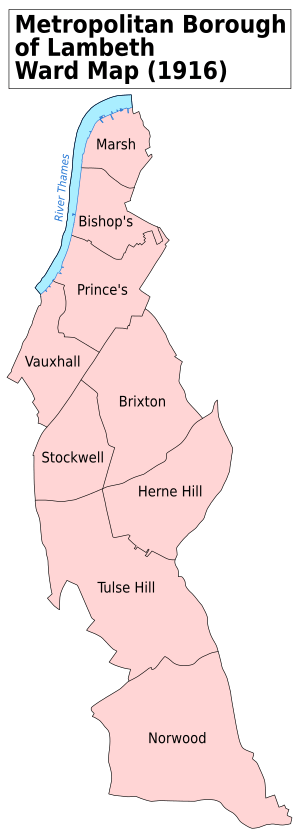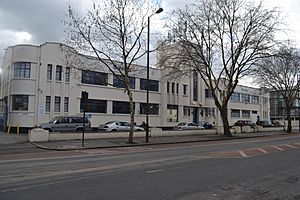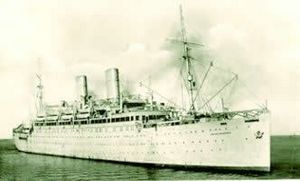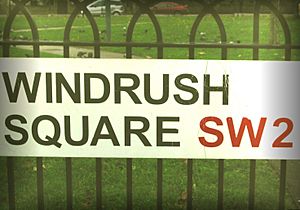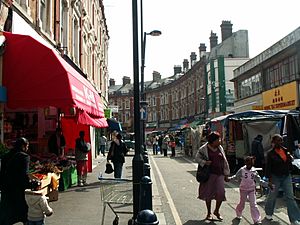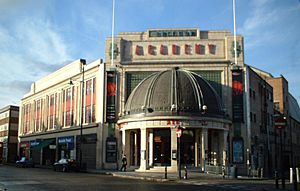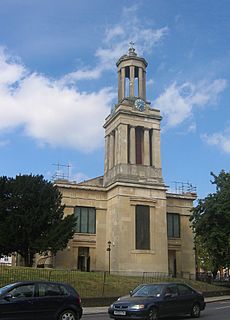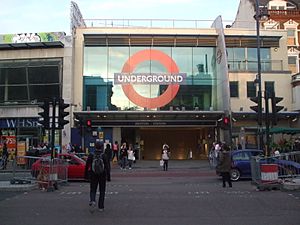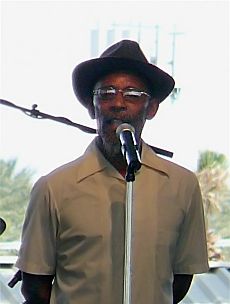Brixton facts for kids
Quick facts for kids Brixton |
|
|---|---|
 Lambeth Town Hall |
|
| Population | 78,536 (2011 census) |
| OS grid reference | TQ315755 |
| • Charing Cross | 3.8 mi (6.1 km) N |
| London borough | |
| Ceremonial county | Greater London |
| Region | |
| Country | England |
| Sovereign state | United Kingdom |
| Post town | LONDON |
| Postcode district | SW2, SW9 |
| Dialling code | 020 |
| Police | Metropolitan |
| Fire | London |
| Ambulance | London |
| EU Parliament | London |
| UK Parliament |
|
| London Assembly |
|
Brixton is a district in the south of London, England, within the London Borough of Lambeth. The area is identified in the London Plan as one of 35 major centres in Greater London. Brixton experienced a rapid rise in population during the 19th century as communications with central London improved.
Brixton is mainly residential with a prominent street market and substantial retail sector. It is a multiethnic community, with a large percentage of its population of Afro-Caribbean descent. It lies within Inner London and is bordered by Stockwell, Clapham, Streatham, Camberwell, Tulse Hill, Balham and Herne Hill. The district houses the main offices of Lambeth London Borough Council.
Brixton is 2.7 miles (4.3 km) south-southeast from the geographical centre of London near Brixton Underground station on the Victoria Line.
Contents
History

Until the mid-20th century
The name Brixton is thought to originate from Brixistane, meaning the stone of Brixi, a Saxon lord. Brixi is thought to have erected a boundary stone to mark the meeting place of the ancient hundred court of Surrey. The location is unknown but is thought to be at the top of Brixton Hill, at a road known at the time as Bristow or Brixton Causeway, long before any settlement in the area. Brixton marks the rise from the marshes of North Lambeth up to the hills of Upper Norwood and Streatham. At the time the River Effra flowed from its source in Upper Norwood through Herne Hill to Brixton. At Brixton the river was crossed by low bridges for Roman roads to the south coast of Britain, now Brixton Road and Clapham Road. The main roads were connected through a network of medieval country lanes, such as Acre Lane, Coldharbour Lane, Brixton Water Lane and Lyham Road, formerly Black Lane. It was only at the end of the 18th century that villages and settlements formed around Brixton, as the original woodland was gradually reduced until the area was covered in farmland and market gardens known for game and strawberries.
The area remained undeveloped until the beginning of the 19th century, the main settlements being near Stockwell, Brixton Hill and Coldharbour Lane. With the opening of Vauxhall Bridge in 1816, improved access to Central London led to a process of suburban development. The largest single development, and one of the last in suburban character, was Angell Town, laid out in the 1850s on the east side of Brixton Road, and so named after a family that owned land in Lambeth from the late 17th century until well into the 20th.
One of a few surviving windmills in London, built in 1816, is just off Brixton Hill and surrounded by houses built during Brixton's Victorian expansion. When the London sewerage system was constructed during the mid-19th century, its designer Sir Joseph Bazalgette incorporated flows from the River Effra, which used to flow through Brixton, into his 'high-level interceptor sewer', also known as the Effra sewer.
Brixton was transformed into a middle class suburb between the 1860s and 1890s. Railways linked Brixton with the centre of London when the Chatham Main Line was built through the area by the London, Chatham and Dover Railway in the 1860s. In 1880, Electric Avenue was so named after it became the first street in London to be lit by electricity. In this time, large expensive houses were constructed along the main roads in Brixton, which were converted into flats and boarding houses at the start of the 20th century as the middle classes were replaced by an influx of the working classes.
By 1925, Brixton attracted thousands of new people. It housed the largest shopping centre in South London at the time, as well as a thriving market, cinemas, pubs and a theatre. In the 1920s, Brixton was the shopping capital of South London with three large department stores and some of the earliest branches of what are now Britain's major national retailers. Today, Brixton Road is the main shopping area, fusing into Brixton Market. A prominent building on Brixton High Street (at 472–488 Brixton Road) is Morleys, an independent department store established in the 1920s.
On the western boundary of Brixton with Clapham stands the Sunlight Laundry, an Art Deco factory building. Designed by architect F.E. Simpkins and erected in 1937, this is one of the few art deco buildings that is still owned by the firm that commissioned it and is still used for its original purpose.
The Brixton area was bombed during World War II, contributing to a severe housing crisis, which in turn led to urban decay. This was followed by slum clearances and the building of council housing. In the 1940s and 1950s, many immigrants, particularly from the West Indies, settled in Brixton. More recent immigrants include a large Portuguese community (see Little Portugal) and other European citizens. Brixton also has an increasingly ageing population, which affects housing strategies in the area.
1948: The Windrush generation
The first wave of immigrants (492 individuals) that formed the British African-Caribbean community arrived in 1948 at Tilbury Docks on the MV Empire Windrush from Jamaica and were temporarily housed in the Clapham South deep shelter. The nearest Labour Exchange (Jobcentre) was on Coldharbour Lane, Brixton, and the new arrivals spread out into local accommodation.
Many immigrants only intended to stay in Britain for a few years, but although a number returned to the Caribbean, the majority remained to settle permanently. The arrival of the passengers has become an important landmark in the history of modern Britain, and the image of West Indians filing off its gangplank has come to symbolise the beginning of modern British multicultural society. In 1998 the area in front of the Tate Library in Brixton was renamed "Windrush Square" to mark the 50th anniversary of the arrival of the Windrush.
1990s
The 1995 riots were initially sparked by the death of a black man (Wayne Douglas) in police custody and occurred in an atmosphere of discontent about the gentrification of Brixton.
Former Prime Minister John Major's own childhood roots in Brixton were used in a campaign poster during the Conservative Party's 1992 election campaign: "What does the Conservative Party offer a working class kid from Brixton? They made him Prime Minister."
On 17 April 1999 neo-nazi bomber David Copeland planted a nail bomb in Electric Avenue, which exploded on a market day by the Iceland supermarket at the junction with Brixton Road (Brixton High Street). Copeland was sentenced to six concurrent life sentences in June 2000. The Brixton bombing is reported to have targeted the black community in Brixton. Copeland also bombed Brick Lane, the heart of East London's Bangladeshi and Asian community, and the Admiral Duncan pub in Soho, London, frequented predominantly by the gay community. The BBC reports that Copeland intended to ignite a race war across Britain with his bombing campaign. A 2009 play about the events, The First Domino, was written by one victim in the Soho attack.
Gentrification
There is debate regarding whether Brixton's recent renaissance is regeneration or gentrification. Some believe the area has slowly undergone a process of gentrification since the 1990s and has resulted in many wealthy middle-class individuals taking advantage of the area's location and the thriving Bohemian art scene. However, others argue that the area is undergoing exciting regeneration. In recent years Brixton has hosted a regular farmers' market on Station Road, as well as Pop-up restaurants and pop-up shops. New art galleries, delicatessens, bars, cafes and vintage clothing stores, particularly in and around Brixton Village Market have also opened, which some believe is gentrifying the area in a similar way to that in nearby Clapham.
Brixton was awarded The Great Neighbourhood Award 2013 (covering the UK and Ireland) by The Academy of Urbanism.
In April 2015, a Reclaim Brixton protest was held by local residents and activists.
Transition Town
Brixton was one of the first inner-city based 'Transition Town' projects in the UK. Brockwell Park hosts the now annual Urban Green Fair, first held in summer 2007.
Brixton Pound
| Brixton pound | |
|---|---|
| User(s) | Brixton |
The Brixton Pound was first trialled at Transition Town Brixton's 'Local Economy Day' 19 June 2008. It was then launched on 17 September 2009 by Transition Town Brixton. The Brixton Pound is a local currency that is available as an alternative to the pound sterling. The first trading day of the Brixton Pound was on 18 September 2009 with 80 local businesses accepting the currency. Other towns in the UK that use their own currency include Bristol, Totnes in Devon, Stroud in Gloucestershire and Lewes in Sussex.
The Brixton Pound aims to boost the local economy and build a mutual support system amongst independent businesses by tying local shoppers to local shops and by encouraging local shops to source goods and services locally. The notes are available in B£1, B£5, B£10 and B£20 denominations and depict local celebrities such as the community activist Olive Morris and the environmentalist James Lovelock. Lambeth council has endorsed the project which the New Economics Foundation helped to develop.
On 29 September 2011, the Brixton Pound launched an electronic version of the currency where users can pay by text message.
A second issue of the paper currency was launched, featuring a new set of well-known people with Brixton connections: On the B£1, the Black Cultural Archives founder Len Garrison, on the B£5, Los Angeles Lakers' Luol Deng, David Bowie on the B£10 and on the B£20, World War II secret agent Violette Szabo.
The reverse of the notes, designed by Brixton agency This Ain't Rock'n'Roll, feature notable local landmarks such as the Stockwell Skatepark, public art on Electric Avenue, Nuclear Dawn – one of the Brixton murals – and the Stirling Prize-winning Evelyn Grace Academy. All four notes feature a design motif inspired by Coldharbour Lane's Southwyck House (or "Barrier Block").
Brixton Market

With the arrival of the railway in Brixton in the 1870s a building boom set in and Brixton developed into a major shopping centre. The first purpose-built department store, Bon Marché, was opened on Brixton Road in 1877 and Electric Avenue was one of the first shopping arcades to have electric lighting. The now famous Brixton Market began in Atlantic Road and was moved to Station Road in the 1920s to ease traffic congestion. Brixton Market is open every day, selling a range of Afro-Caribbean products and reflects other communities in the local area with Indian and Vietnamese supermarkets and South American butchers amongst the shops and stalls.. London Farmers' Markets opened a farmers market on Brixton Station Road in September 2009. It is open every Sunday from 10am-2pm.
Culture
Brixton murals
After the riots in 1981 a series of murals were funded by the council. The murals portray nature, politics, community and ideas. The surviving murals include the Brixton Academy Mural (Stockwell Park Walk) by Stephen Pusey (1982) showing a mixed group of young people, intended to portray the natural harmony that could be found between children of mixed backgrounds in the local schools.
Entertainment
The Ritzy Cinema, Coldharbour Lane, is a formerly independent cinema now owned by Picturehouse Cinemas. The building was designed as the Electric Pavilion in 1910 by E. C. Homer and Lucas, one of England's first purpose-built cinemas.
Brixton has a significant clubbing and live music scene. Large venues include Brixton Academy, Electric Brixton and Mass at St Matthew's Church. A range of smaller venues such as The Prince Albert, The Prince / DexClub, The Windmill, The Dogstar, Jamm, The Telegraph, Plan B, Hootananny, The 414, The Effra Tavern, Upstairs at the Ritzy, and The Grosvenor are a major part of London's live music scene. The Brixton Splash is an annual one-day street party held since 2006. The event is community run, showcasing local talent and celebrating the cultural diversity and history of Brixton.
Brixton is also home to a 1970s purpose-built skatepark, named Stockwell Skatepark, but known locally as Brixton Beach after graffiti on the north wall of the park.
Music scene
In recent years Brixton has been at the forefront of UK Grime/Hip hop and Road Rap.
Religious sites
Brixton Synagogue
Brixton Synagogue at 49 Effra Road opened in 1913 and closed in 1986, with the congregation then amalgamating with the nearby Streatham Synagogue. The front of the building still exists.
Christian churches
Brixton lies within the Anglican Diocese of Southwark. The grade II* listed St Matthew's Church, located on Brixton Green, was built in 1822 by the architect C. F. Porden in the Greek Revival style. It is one of the "Waterloo churches" built to celebrate Britain's victory at the Battle of Waterloo. St. Saviour's Church was a location filming site of Alfred Hitchcock's The Man Who Knew Too Much in 1955, identified in the film as Ambrose Chapel.
The 1868 parish church of St Jude, located on Dulwich Road, was designed by the architect John Kirk of Woolwich. It closed in 1975, and the parish merged with St Matthew's. The church building is today used as business premises by a publishing company.
Christ Church on Brixton Road is an Art Nouveau and Byzantine-style Grade II* listed building built in 1902 by Beresford Pite, and St Paul's church on Ferndale Road was originally built in 1958 as a Seventh-day Adventist church by John Soper.
Corpus Christi Church in Brixton comes under the remit of the Roman Catholic Archdiocese of Southwark.
Brixton Mosque
The Masjid ibn Taymeeyah, or Brixton Mosque and Islamic Cultural Centre, is located in Gresham Road, close to Brixton Police Station. The mosque has facilities for both men and women and space for 400 worshippers during prayer. Opened in 1990 it is one of the oldest mosques in South London. The mosque provides religious, social and financial support to its members.
The mosque made international headlines when it was reported that Richard Reid, the so-called "shoe bomber", had attended the mosque. Abdul Haqq Baker, chairman of Brixton Mosque, told the BBC that Reid came to the mosque to learn about Islam but soon fell in with what he called "more extreme elements". Zacarias Moussaoui, who was convicted of conspiring to kill citizens of the USA as part of 11 September 2001, terrorist attacks, made his initial steps into radical indoctrination in Brixton Mosque, where he met Reid, though he was expelled from the mosque after he turned up wearing combat fatigues and a backpack, and pressured the cleric to give him information on joining the jihad. Abdullah el-Faisal, a radical Muslim cleric who preached in the UK until imprisoned for stirring up hatred and later deported to Jamaica in 2007, was associated with the Brixton Mosque and began preaching to crowds of up to 500 people, but was ousted by its Salafi administration in 1993. Afterward, he gave a lecture he called The Devil's Deception of the Saudi Salafis, scorning the Salafi Muslims (especially the members of the Brixton Mosque), calling them hypocrites and apostates (takfir).
Brixton was a site of a conference after the London bombings, at which local Muslims condemned all use of terror and indiscriminate killing. Footage of the conference was included in a six-part ITV series called Mosque. It included local Muslims talking about the discrimination they face from people not able to differentiate between Muslims and terrorists, and the local Brixton community, on the whole, is described as welcoming towards Muslims.
In popular culture
Film and television
- Director Richard Parry's 2001 film South West Nine (SW9), whose name refers to the postcode covering much of central Brixton, was shot here. Confusingly, this postcode is officially that of Stockwell – although the northern part of Brixton falls within the boundary – whereas SW2 (the Brixton Hill sorting office) also covers Tulse Hill A204 road, Streatham Hill and Brixton Hill.
- Sarah Manning, a fictional character from Orphan Black, the BBC America Series, was from Brixton.
Transport
Buses
Brixton is served by London Buses routes 2, 3, 35, 37, 45, 59, 109, 118, 133, 159, 196, 250, 322, 333, 345, 355, 415, 432, P4, P5, N2, N3, N35, N109, N133
London Underground
The nearest station is Brixton on the Victoria line. Around the corner from it is the National Rail station.
National Rail
The nearest station is Brixton for Southeastern services towards London Victoria and Orpington. It is located around just around the corner from the Underground station.
Road Network
Brixton is located on several main roads. The A203, A204 and A2217 links the area to Vauxhall Bridge and the A23 London to Brighton road runs through the area from the north to the south. Brixton was due to be a major interchange of the South Cross Route, part of the London Ringways plan, which was cancelled in the 1970s.
Notable people
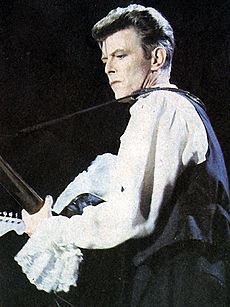
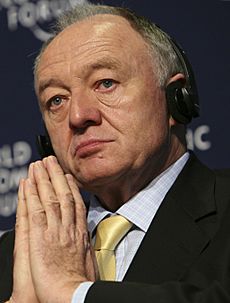
Three people who have lived in Brixton have blue plaques marking their former homes:
- C. L. R. James, the writer and black political activist, lived in Railton Road, above the offices of Race Today.
- Dan Leno (1860–1904), an English music hall comedian famous for his drag acts (56 Akerman Road).
Other notable people with Brixton connections include:
- David Bowie was born at 40 Stansfield Road, Brixton.
- Former London Mayor Ken Livingstone grew up and lived for many years in Brixton.
- Poet Linton Kwesi Johnson is a long-time Brixton resident.
- Former British Prime Minister John Major spent part of his childhood living off Coldharbour Lane. He began his political career as a local Lambeth councillor.
- Max Wall, comedian and music hall performer, was born in Brixton.
- Freddie Davies, the "parrot-faced" comedian and actor, was born in Brixton in 1937.
- Poly Styrene, the singer of the band X-Ray Spex, was born in Bromley in 1957 but grew up in Brixton.
- Jumpin Jack Frost, drum and bass producer and DJ was born and still lives in Brixton.
- Danny Williams, heavyweight boxer, was born in Brixton
- Frank Dillane, film actor, was born in Brixton as well as spending his early childhood there.
- Paul Simonon and Mick Jones of The Clash are both from Brixton.
- Drum and bass producer Dillinja is from Brixton.
- Screenwriter, director Daniel Mulloy was born in Brixton.
- The band Alabama 3 were formed in Brixton.
- House music duo Basement Jaxx formed in Brixton.
- EBK, long-term resident of Brixton.
- Jan Chappell, actress, best known as Cally in Blake's 7.
- Joe Cornish, presenter of the BBC production Adam and Joe in the 1990s, and current comedy radio presenter on BBC6 Music with Adam Buxton.
- Bradley McIntosh, member of pop group S Club 7.
- Sharon Osbourne, wife of Ozzy Osbourne and daughter of Don Arden, was born in Brixton.
- Mike Skinner of the band "The Streets" moved to Brixton c. 2000 to pursue his recording career. Some of his songs are about living in Brixton.
- Skin, singer of the band Skunk Anansie, grew up in Brixton.
- Stereo MC's, acid jazz/club dance group, were formed and are still based in Brixton.
- Novelist Martin Millar lived here, and most of his novels are set in and around Brixton.
- Environmentalist James Lovelock, famous for proposing the Gaia hypothesis, was born and spent his childhood in Brixton.
- Frank Reginald Carey, Second World War fighter ace, was born in Brixton.
- Jo Self, artist, long-term resident of Brixton.
- Iwan Thomas, Olympic athlete.
- Nyron Nosworthy, professional footballer.
- Shivani Kapoor, Indian model.
- Ty, rapper.
- Several members of the So Solid Crew.
- Sneakbo, rapper.
- Big Narstie, rapper.
- Luol Deng, player for the American basketball team Miami Heat, lived and played in Brixton.
- Alex Wheatle, novelist.
- Lisa Maffia, singer and TV personality, was brought up in Brixton.
- Bunmi Mojekwu, actress.
- James Dagwell, journalist and former BBC News presenter, lived in Brixton.
- La Roux (Elly Jackson), musician, was born and raised in Brixton.
- Hew Locke, contemporary artist, a resident of more than 20 years, has cited Brixton and its market as an influence on his work.
- Nikki Sudden and Dave Kusworth of the Jacobites shared a house on Norwood Road, Brixton, in the early 1980s.
- Danny Kirwan of the band Fleetwood Mac was born and raised in Brixton.
- Clive Dunn (1920–2012), best known for playing Lance-Corporal Jack Jones in the British sitcom Dad's Army, was born in Brixton.
- Jean Kent (1921–2013), actress known for appearing in British films, was born in Brixton.
- Philip Lindsey Clark, sculptor, born in Brixton
- AJ Tracey, rapper, born in Brixton but raised in Ladbroke Grove.
- Dillian Whyte, Jamaican born boxer; immigrated to Britain as a teenager and grew up in Brixton.
- Dave, rapper, born in Brixton but was raised in Streatham.
- Bob and Alf Pearson, a British musical double act, lived on Electric Avenue in the late 1930s.
Images for kids
-
Map of Brixton in 1889, showing Coldharbour Lane, Angell Town and Loughborough Road. Published in Life and Labour of the People in London by Charles Booth. The red areas are "middle-class, well-to-do" and the yellow areas are "upper-middle and upper classes, wealthy".
See also
 In Spanish: Brixton para niños
In Spanish: Brixton para niños



